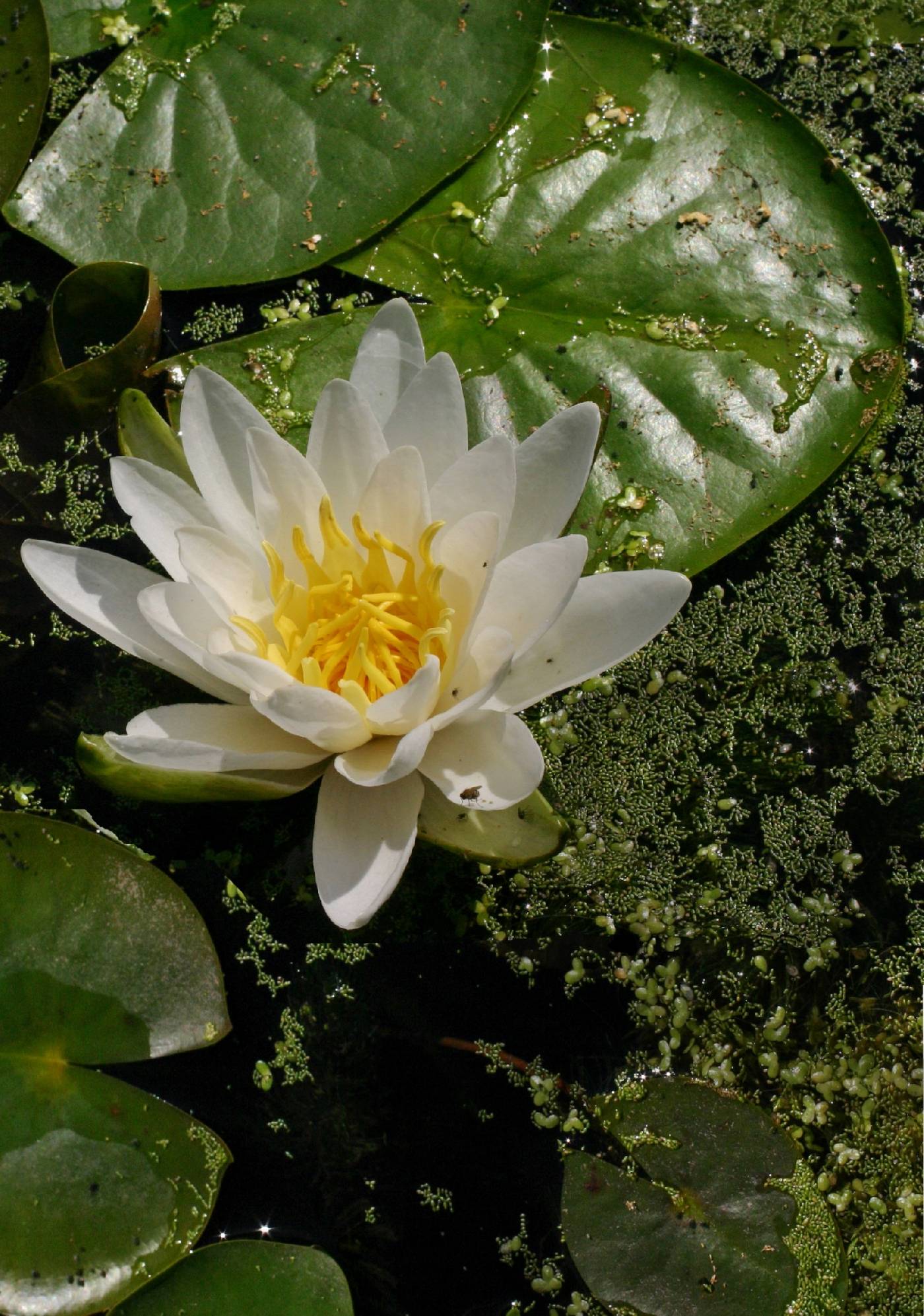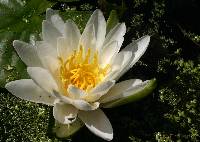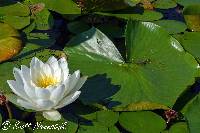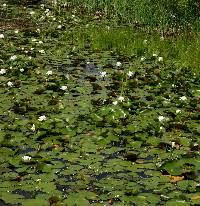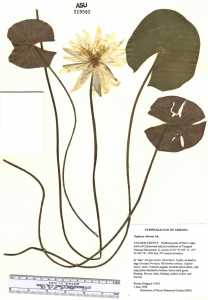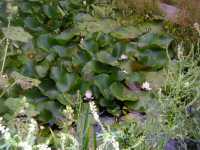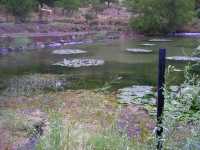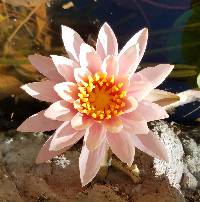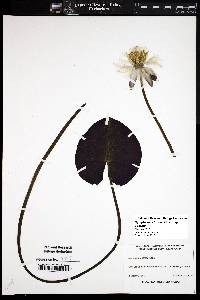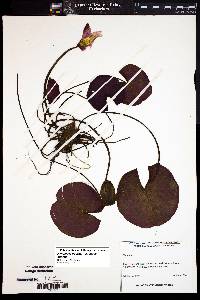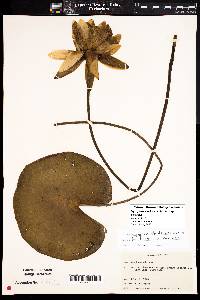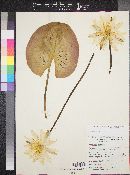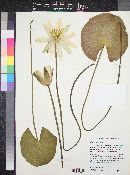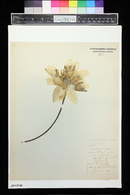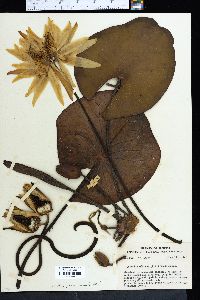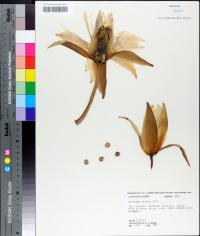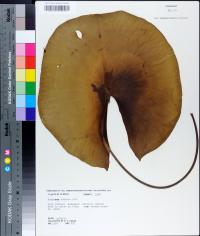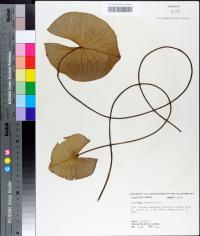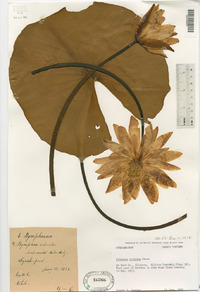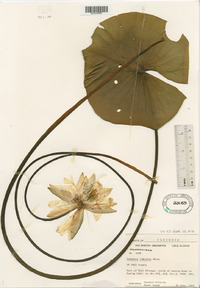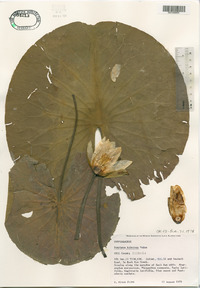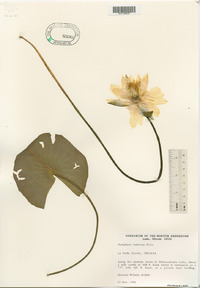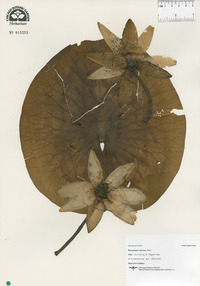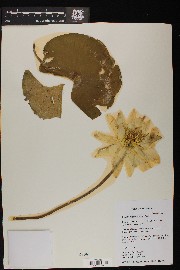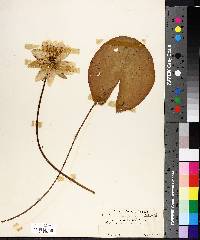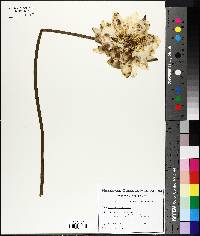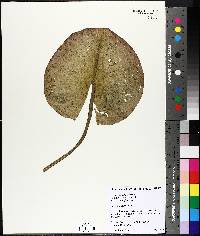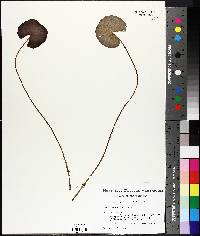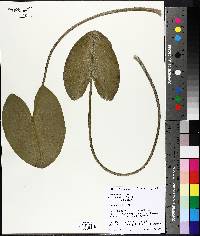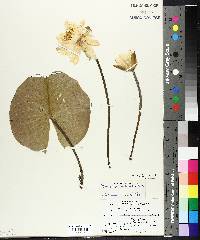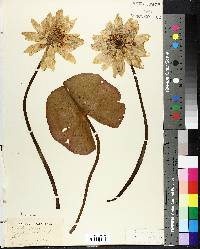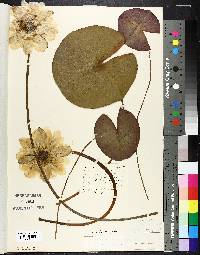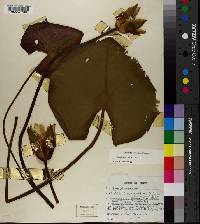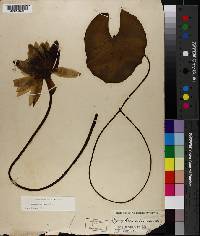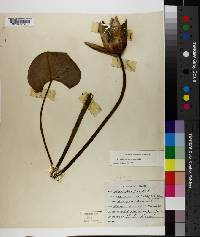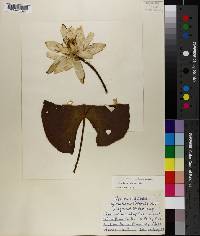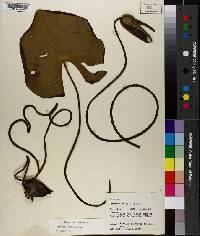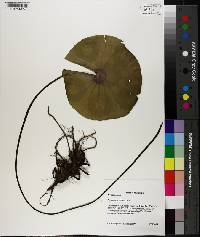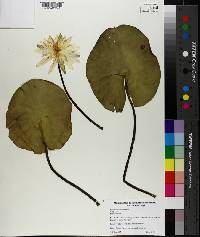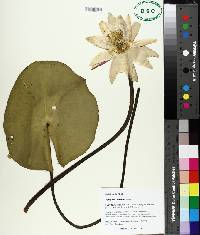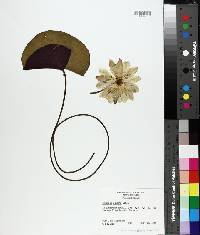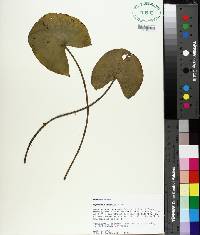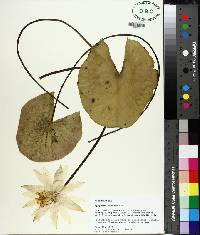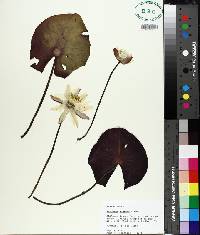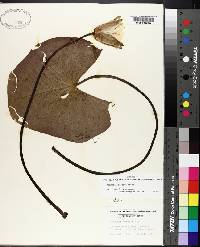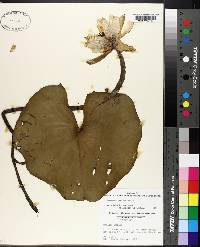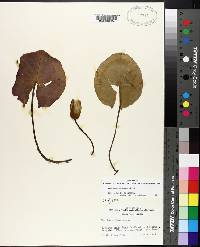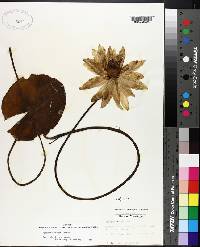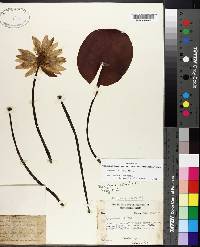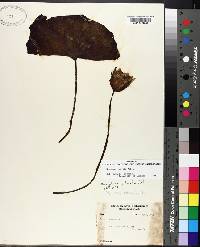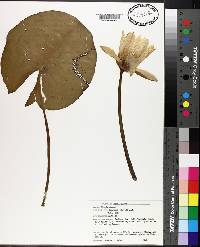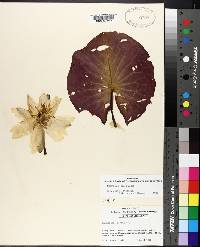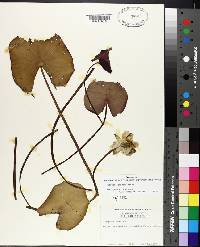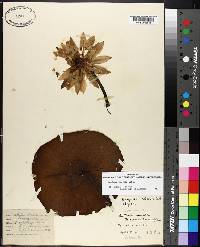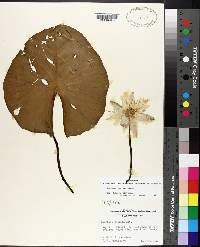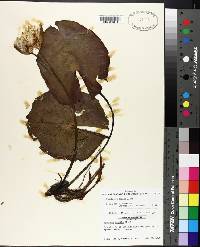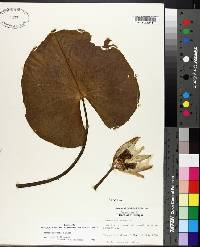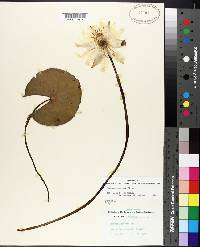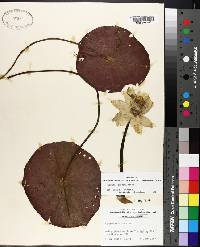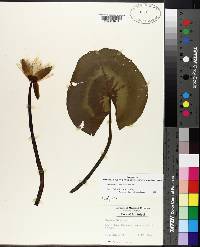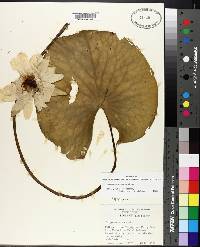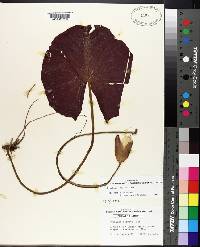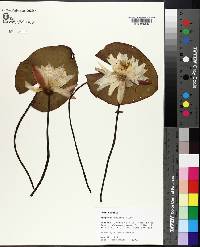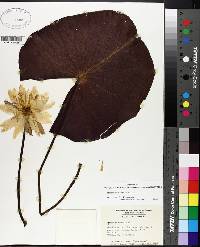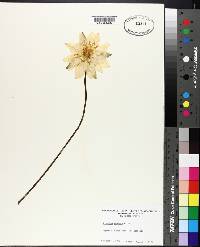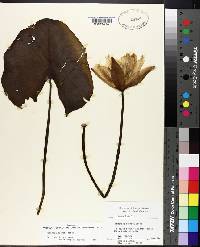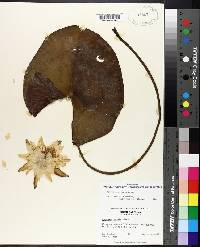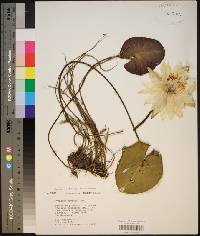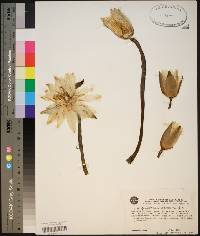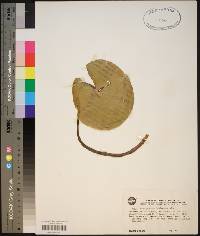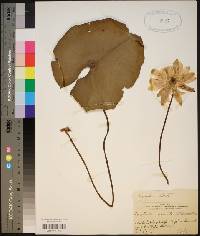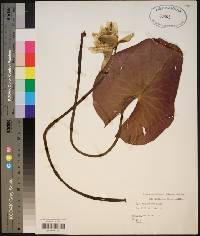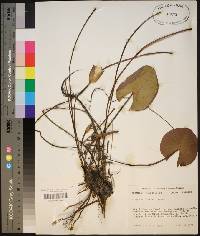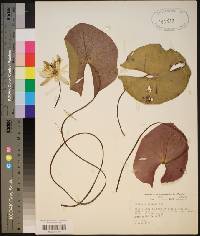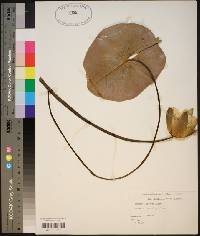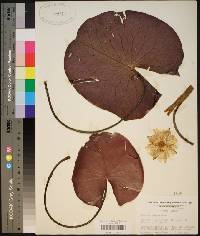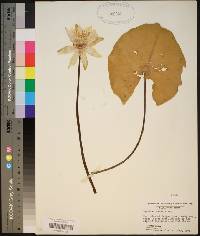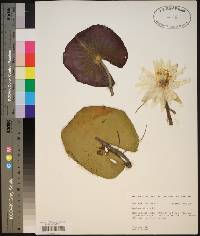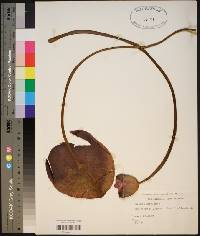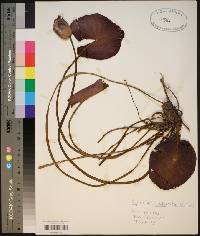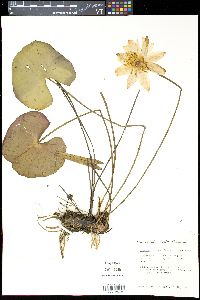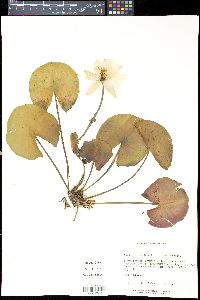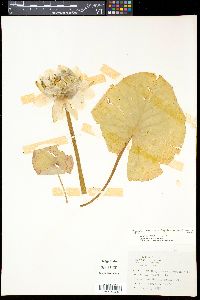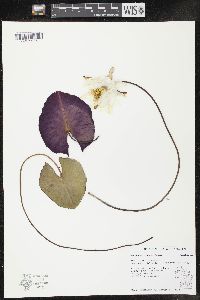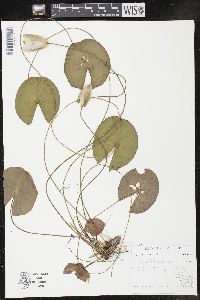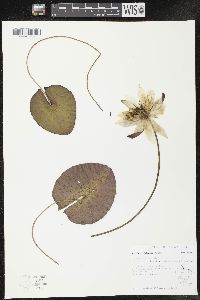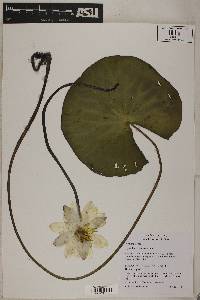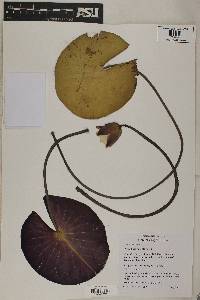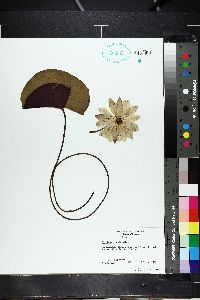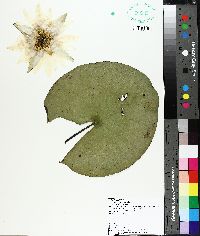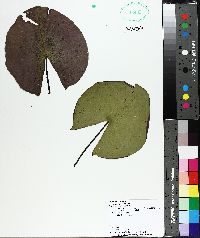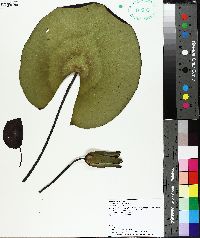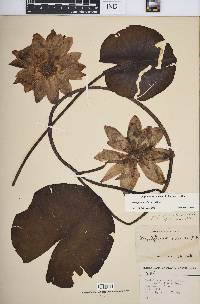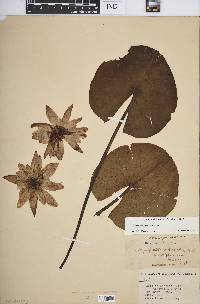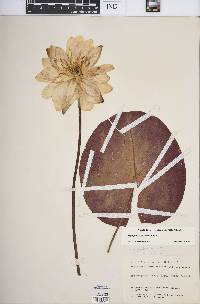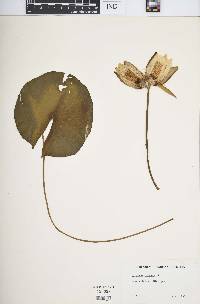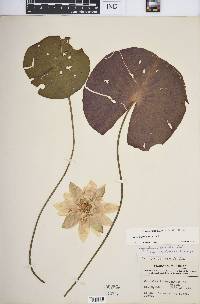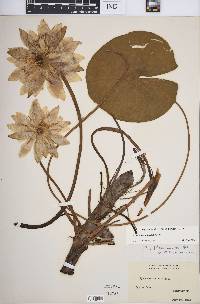
|
|
|
|
Family: Nymphaeaceae
American White Water-Lily, more...American waterlily, American white waterlily, white waterlily
|
Rhizomes frequently branched, repent, cylindric; stolons absent. Leaves: petiole glabrous or pubescent. Leaf blade abaxially green to purple, adaxially green, ovate to nearly orbiculate, (5-)10-40 × (5-)10-40 cm, margins entire; venation radiate centrally, without weblike pattern, principal veins 6-27; surfaces glabrous. Flowers floating, 6-19 cm diam., opening and closing diurnally, only sepals and outermost petals in distinct whorls of 4; sepals uniformly green or reddened, obscurely to prominently veined, lines of insertion on receptacle not prominent; petals (14-)17-43, white, rarely pink; stamens 35-120, yellow, connective appendage projecting less than 1(-2) mm beyond anther; filaments widest below middle, mostly longer than anthers; pistil 10-25-locular, appendages at margin of stigmatic disk linear-tapered, 3-8(-10) mm. Seeds ovoid, ca. 1.5-4.5 × 0.9-3 mm, 1.5-1.75 times as long as broad, lacking papillae on surface. Nymphaea odorata is a polymorphic species, particularly in and around the Great Lakes region. Over much of that area the two entities treated here as subspecies are allopatric and can be readily distinguished; however, in areas of sympatry some populations are intermediate or contain some intermediate plants without any apparent loss of fertility. Although traditional treatments distinguish the two at specific rank, recent floristic works have accepted only one variable species with no infraspecific taxa. While calling attention to this taxonomic problem, field studies from within the Great Lakes region have not sufficiently accounted for the observed variation. Although evidence (P. H. Monson 1960; G. R. Williams 1970; I. L. Bayly and K. Jongejan 1982) suggests that some variability may be induced by environmental conditions, both extremes have been found growing together under seemingly identical conditions. Further study, especially involving artificial hybridization and/or molecular approaches, should be undertaken to clarify the relationship. The geographic patterning of the overall variation and usefulness of retaining a separate status for those morphs previously classified as Nymphaea tuberosa justify the recognition of two subspecies at this time. The key, while useful in separating the two extremes in this morphologic continuum, is of limited use in identifying intermediate plants. Compounding the problem of identification is the fact that key characters are often poorly represented on herbarium material, thus some guidance should be taken from the distributional notes provided with each subspecies. Truly intermediate plants, known in Minnesota, Wisconsin, Michigan, New York, and Vermont, and in southern Ontario and Quebec, may be treated as N . odorata without regard to subspecies. Sporadic populations, most probably introduced, on the Great Plains and farther west are difficult to place to subspecies and are best treated similarly although they are here included under subsp. odorata .
Plant: perennial aquatic herb; fresh-water; usually glabrous, with thick adventitious roots; STEMS stout, horizontal, elongate, sometimes tuberous, rhizomes, mostly 2.5-3 cm thick, with a few stout persistent branches, pale in color, covered with a dense, short, black pubescence, the internodes 2-5 cm long Leaves: 12-25 cm diameter, mostly glabrous, orbicular to oval, never peltate, coriaceous, entire or slightly emarginate at apices, the sinus usually narrow, the blade green, waxy above, green-tinged to purplish-tinged beneath; veins evident but not prominent beneath; petioles smooth or slightly pubescent, greenish-purple Flowers: 7-25 cm diameter, very sweet-scented; peduncles smooth, to 3 m long, greenish-purple, coiling 5-9 times in fruit; receptacle short, round, scarcely evident; sepals 4, 2-8 cm long, 1.5-2.5 cm wide, elliptic to ovate or ovate-lanceolate, usually purplish-green or purple on back; petals 17-32, 2-9 cm long, 1.5-3.5 cm wide, ovate to elliptic-lanceolate, slightly broadened upward, the apices obtuse or rounded, gradually tapering to subacute tips, white; stamens 55-106; petaloid staminodes 1-4 cm long, 2.5-3 cm wide, the outermost staminodes oblanceolate, acute, with one short anther cell; carpels 13-25; styles short linear Fruit: a leathery berry-like capsule, 2.5-3.5 cm in diameter, fleshy or spongy, ripening under water; SEEDS ellipsoid, 1.4-4.4 mm long, 1.6 mm wide, dark olive, smooth, shining, aril one-fourth longer than the seed Misc: Ponds, lakes and slow streams; 350-2100 m (1100-6900 ft); Apr-Oct (rarely producing fruits in our area) REFERENCES: Ricketson, Jon. 1995. Nymphaeaceae. J. Ariz. - Nev. Acad. Sci. 29(1). 26. Ricketson 1995 Duration: Perennial Nativity: Native Lifeform: Forb/Herb General: Submerged stout stem from tuberous rhizome mostly 2.5-3 cm thick with few stout persistent branches, covered in dense, short black pubescence. Leaves: Orbicular to oval, 12-25 cm in diameter, mostly glabrous and entire to slightly emarginate at apices, the blade green and waxy above, green-tinged or purplish-tinged beneath. Flowers: Floating or raised above the water, 7-25 cm in diameter, sweet scented, on smooth peduncles that reach 3 m long, greenish purple, 4 sepals, these 2-8 cm long, 1.5-2.5 cm wide, elliptic to ovate or ovate-lanceolate, purplish green to purple on back, petals 17-32, 2-9 cm long, 1.5-3.5 cm wide, ovate to elliptic-lanceolate, slightly broadened upward, apices obtuse or rounded, white with 55-106 stamens in multiple series. Fruits: Leathery berry like capsule, 2.5-3.5 cm in diameter. Ecology: Found in ponds, lakes and slow moving streams from 1,000-7,000 ft (365-2134 m); flowers April-October. Distribution: Introduced to N. Amer., in every state in the U.S. except ND, WY and Alberta ; south to S. Amer.; also in Europe and Australia. Notes: Distinctive in still or slow moving water with its large oval leaves. Ethnobotany: Used for mouth sores, coughs, colds, toothaches, swelling, the tubers were boiled and eaten, and the buds were eaten before opening. Etymology: Nymphaea is from Greek nymphaia referring to a water nymph, while odorata means fragrant or sweet-smelling. Synonyms: None Editor: SBuckley 2010, FSCoburn 2015 Rhizome with or without knotty tubers; lf-blades 1-3 dm wide, rotund, with a narrow sinus, often purple or red beneath; fls ±fragrant, open from early morning to noon or midafternoon, mostly 7-20 cm wide; sep 3-10 cm, the receptacle circular at the level of their insertion; pet 17-25, about equaling the sep, white or rarely pink, narrowly elliptic-oblong to spatulate, tapering to a subacute or rounded tip; stamens mostly 40-100; stigmatic lines 10-25; sep closely inflexed over the top of the fr; seeds 2-4 mm; 2n=56, 84. Quiet waters; Nf. to Man., n. Minn., and n. Mich., s. on or near the coastal plain to Fla. and Tex. Summer. Var. odorata, with nearly the range of the species, has flat lvs, and the sep are seldom over 7 cm. (N. tuberosa; C. minor is the small-flowered extreme) Var. gigantea Tricker, restricted to the coastal plain from Del. to Fla. and Tex., has the lf-margin upturned, and the fls average larger, the sep to 10 cm. (C. lekophylla)
N. alba L., a related European sp., is casually intr. in N. Engl. It has the petioles crowded on the rhizome, the blades deep purple beneath, the fls open nearly all day, and the pet rounded above. Gleason, Henry A. & Cronquist, Arthur J. 1991. Manual of vascular plants of northeastern United States and adjacent Canada. lxxv + 910 pp. ©The New York Botanical Garden. All rights reserved. Used by permission. |
|
|
|
This project was made possible in part by the Institute of Museum and Library Services [MG-70-19-0057-19].
Powered by Symbiota

